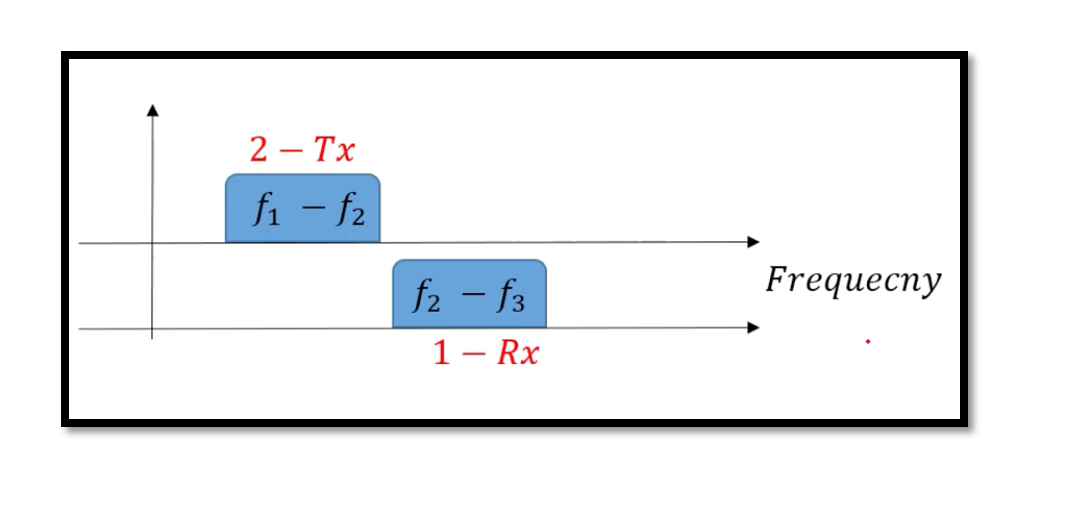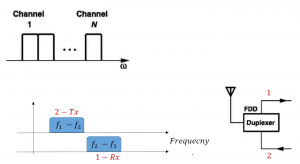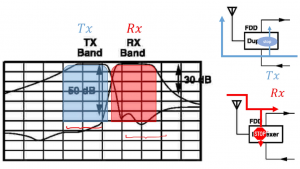
What is Frequency Division Duplexing (FDD)?
Frequency Division Duplexing
In Frequency Division Duplexing is a full-duplex model of transceiver where different bands of frequencies are utilized for Tx and Rx and the data is transmitted and received at the same time. Bandpass filters are used to isolate the two passes. As shown in the below image the send and receive process is simultaneous but has different frequency bands. In TDD the frequency band remains constant for both Tx and Rx, where both takes turn to do the work, but in FDD it happens simultaneously, by just separating the frequency band hence, there won’t be any interference. FDD is better than TDD because of simultaneous communication. Transmitters operate at an allocated spectrum different from than receiver. For example, in mobile communication, the link between the mobile phone user and the base station is different than the link from the base station to the user hence avoiding interference. The frequency offset between the transmitter and receiver band is called the guard band which is quite small.
Tx operates at a different band than Rx so as you see here, we won’t have data interference and instead of a switch we will use a duplexer. The duplexers basically are like a bandpass filter and they use it to isolate the two paths. Let’s explain the idea of a duplexer using the figure below as you see we have two kinds of bandpass filters here.
Duplexer

The duplexer is a chain of two bandpass filters. There are two bandpass filters 1 and 2 for Tx and Rx respectively. The left side has 50dB attenuation which means that if there’s a signal on the right side it will be attenuated by Tx by 50dB. So imagine that our transmitter is sending the data which is going to the duplexer and also is going to the antenna so there are two paths. The first one is from Tx to the antenna and the other path is from Tx to Rx which is the leakage. The duplexer prevents the leakage, how this happens is the TX band filter has Tx frequency so it’s inside the specific band so when we check the Rx band there is a filter here and this filter attenuates the signal so at Rx band won’t have any signal. So this duplexer blocks the leakage, and it doesn’t let the signal from Tx leak into the receiver. In contrast when we are receiving the signal through an antenna, now it’s supposed to go to Rx but again there can be a leakage which will be prevented by a filter from Rx to Tx. The signal captured will then go to Rx and all this is possible only when both Tx and Rx operate at different frequencies.
when we are transmitting, we should have a band with a frequency range but when we are receiving that band should be different than Tx, they will not interfere and will not have the same frequency bands.




